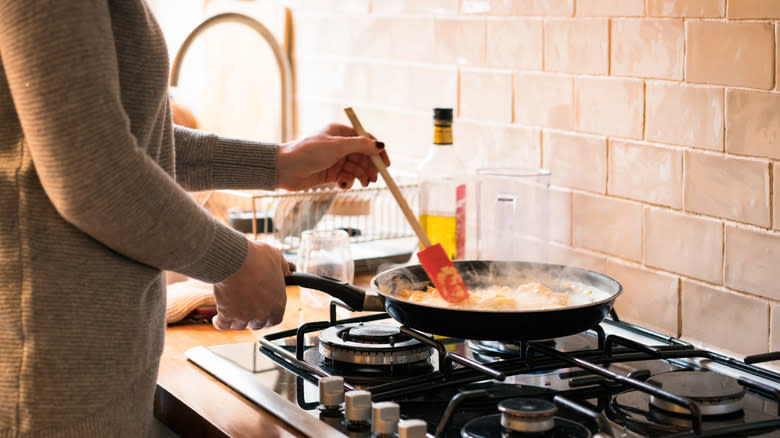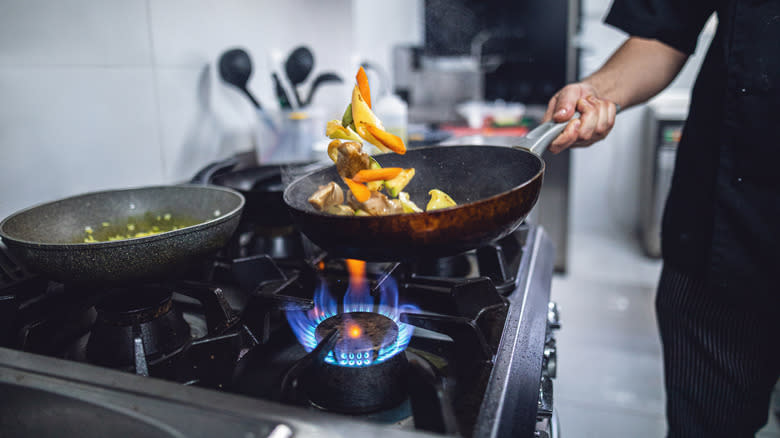Why It's Better To Use The Back Burners On Your Stove, According To Science

Maybe you've heard (or used) the idiomatic phrase "on the back burner" to refer to something that isn't especially important, but that might not be the case when it comes to your actual stove. Sure, a stove's front burners are the most accessible of the quad; it seems intuitive to want to cook on the front burners, right? According to science, though, standing directly over your pots and pans as things cook might not be such a good idea after all.
A 2022 study by Harvard T.H. Chan School of Public Health found that stoves powered by natural gas can release air pollutants benzene, toluene, ethylbenzene, xylene, and hexane, which can be toxic and nearly impossible to detect from smell alone. Earlier this year, New York actually became the first state to ban the installation of gas stoves in all new residential constructions by 2026. In short, it's not a huge deal, but it's also not great for home cooks to be directly breathing in potentially hazardous fumes if they don't have to. Enter ventilation through a range hood.
Forget the restaurant-quality appliances and sleek modern digs. At home, your silver steed is likely a classic stovetop with a humble range hood — most of which completely cover and ventilate the back burners, but only halfway cover the front burners. News flash: If you haven't been favoring the back burners, it's time to start.
Read more: 33 Essential Tools Every Kitchen Must Have
Keep Your Air As High-Quality As Your Meals

For maximum safety, you could obliterate the issue altogether and switch to an electric stove. But, for the average home cook, that option might not be on the table. To help minimize the ventilation issue from the jump, it's helpful to match the burner size to the size of your cookware. Gas stoves often have different-sized burners, and if you're using your smallest pot on your largest burner, for instance, more gas and subsequent fumes will be released straight up into the air than if you used a smaller burner with a matching circumference. In fact, on most stovetops the medium-sized all-purpose burner is typically one of the two back burners. Just be sure to turn on the range hood ventilation system every time you use the stove.
If you don't have a range hood, there are still other ways to increase your air quality and improve kitchen ventilation. Put a box fan in the window, or in the case of a windowless kitchen, invest in a HEPA-filtered air purifier. You can find different models online in the ballpark of $50 to $100. If you're installing a range hood for the first time, position it so that there are 24 to 36 inches between the surface of the stove and the hood. This will ensure its installed low enough to effectively ventilate the fumes and high enough that you still have adequate workspace.
Read the original article on Tasting Table.